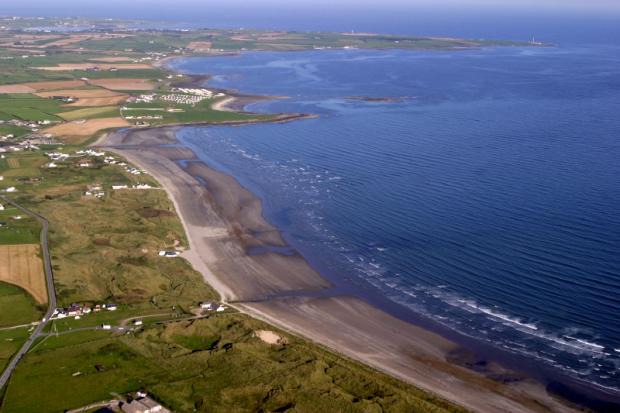
Tyrella and Minerstown has been declared as an ASSI because of its intertidal sand and rock communities, sand dune systems and the associated flora and fauna.
The Minerstown shore is composed of a wide expanse of small and medium boulders with some small bedrock outcrops in the mid and lower shore. The shore is generally sheltered in character and dominated by seaweeds although more exposed rock tops are dominated by limpets and barnacles.
The Honeycomb Worm lives in tubes constructed of sand grains cemented together which may occur in dense aggregations known as biogenic reefs. These reefs are present between boulders in the middle shore and provide increased diversity of habitat.
The Tyrella shoreline is predominantly a linear beach extending for several kilometers. The lower shore is composed of damp, fine sand, while the mid and upper shore area is dominated by medium, shelly sand. The intertidal is dominated by burrowing worms, particularly the Lug Worm.
Patches of shingle vegetation are scattered along the upper shore, and include Yellow Horned-poppy and Oysterplant. Oysterplant is a northerly species in Britain and Ireland and occurs here at one of its most southerly locations.
Behind the upper shore at Tyrella is a sand dune system. Dune types vary from small, frontal dunes (embryo dunes) that often reform each Spring following destruction by Winter storms, to the older, more stable dunes (grey dunes) which are now isolated from sources of wind-blown sand. Between the embryo dunes and grey dunes is a narrow band of mobile sand (white dunes).
The small embryo dunes and white dunes where the sand is still being deposited have Sand Couch grass and Marram grass communities, but grade rapidly into grey dune communities, some of which are species-rich. Marram remains one of the main species but is accompanied by herbs including Cat’s-ear, Common Restharrow, Lady’s Bedstraw, Wild Thyme, Kidney Vetch and Bulbous Buttercup. A number of orchid species are present, including Bee Orchid and Pyramidal Orchid. Damper hollows harbour Early Marsh-orchid and Variegated Horsetail
Minerstown and Tyrella are also important for the Common Seal. They utilise the rocky outcrops androcks away from the shore as haul-out and pupping sites.
Related articles
- ASSI Guidance for Public Bodies/Competent Authorities
- Coastal Areas of Special Scientific Interest
- Conservation Management Plans (CMPs)
- European Marine Sites - Marine Special Areas of Conservation and Special Protection Areas
- International Year of the Salmon 2019
- Introduction to Conservation Management Plans (CMPs) for Northern Ireland’s Special Areas of Conservation
- Marine Conservation Zones
- Marine historic environment
- Marine Protected Areas
- Marine Ramsar sites
- Monitoring marine habitats and species
- Movanagher Fish Farm
- Portrush Coastal Zone
- River Bush Salmon Station
- Salmon Conservation
- Shipwrecks
- Special Areas of Conservation
- Special Areas of Conservation for Harbour porpoise
- Special Protection Areas
